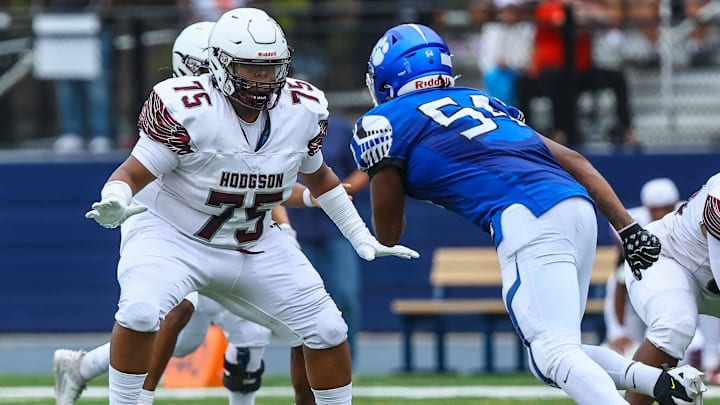Football is a game of strategy, physicality, and precision. While casual fans might focus on flashy offensive plays, coaches and analysts know that a strong defense is often the foundation of championship teams.
One of the most critical, yet often overlooked, aspects of defensive play is the concept of "gap integrity."
Today, we'll dive deep into this fundamental principle and explore why it's so crucial for defensive success.
What are gaps in football?
Before we can understand gap integrity, we need to know what gaps are. In football, gaps refer to the spaces between offensive linemen. These gaps are typically about two feet wide and are designated by letters:
- A-gap: The space between the center and guard
- B-gap: Between the guard and tackle
- C-gap: Between the tackle and tight end (if present)
- D-gap: Outside the tight end
These gaps serve as both protection points for the offense and attack points for the defense. Offenses aim to create running lanes through these gaps, while defenses try to plug them.
What Is Gap Integrity?
Gap integrity is the principle of each defensive player maintaining responsibility for their assigned gap. When a defense maintains gap integrity, every potential running lane is accounted for by a defender. This makes it extremely difficult for the offense to find open space to run through.
Conversely, when a defense loses gap integrity, it means a defensive player has either:
- Overpursued (moved too far past their assigned gap)
- Been late to fill their gap
- Not been in the correct position
Any of these mistakes can create a running lane for the offense, potentially leading to big gains on the ground.
The Importance of Gap Integrity
Gap integrity is the cornerstone of run defense. Without it, even the most talented defensive players can be considered ineffective. Here's why it's so crucial:
- It limits offensive options: When all gaps are covered, the offense has no clear path forward, forcing them into less favorable situations.
- It allows for defensive playmaking: With each player handling their responsibility, others are free to make plays without compromising the overall structure.
- It simplifies assignments: Each player has a clear role, reducing confusion and hesitation.
- It creates predictable scenarios for linebackers: When defensive linemen maintain their gaps, linebackers can flow to the ball carrier more effectively.
Techniques and Alignments
Defensive coordinators use a numerical system to align their front seven (defensive linemen and linebackers). This system, known as "techniques," helps ensure proper gap coverage:
Odd numbers (1, 3, 5, 7, 9) indicate alignment on the outside shoulder of an offensive lineman
Even numbers (0, 2, 4, 6, 8) indicate head-up alignment
Even numbers with an 'i' (2i, 4i) indicate inside shoulder alignment
For example, a "three-technique" defensive tackle aligns on the outside shoulder of the guard, while a "one-technique" aligns on the outside shoulder of the center.
Rules of Gap Integrity Defense
To maintain gap integrity, defensive players must follow several key rules:
- Defensive linemen must engage offensive linemen: This occupies blockers and allows linebackers to flow freely to the ball.
- Players must stay in their assigned gaps: Overpursuing or abandoning a gap can create running lanes for the offense.
- Defensive linemen can't penetrate too deeply: Getting more than a yard into the backfield without making a play can leave linebackers exposed to additional blockers.
- Caution with slanting and twisting: While these tactics can disrupt the offense, they also risk compromising gap integrity if not executed perfectly.
Challenges and Complexities
Maintaining gap integrity isn't always straightforward. Offenses use various formations and motions to create confusion and force defenders out of position.
Additionally, the increasing prevalence of spread offenses and run-pass options (RPOs) has made gap assignments more complex.
Defensive coaches must balance the need for gap integrity with the desire to pressure the quarterback and defend against the pass. This often requires creative scheming and versatile players who can handle multiple responsibilities.
Gap integrity might not be the most exciting aspect of football, but it's undeniably one of the most important. It's the foundation upon which great defenses are built, allowing teams to stifle running games and force offenses into predictable situations.
By understanding gap integrity, fans can gain a deeper appreciation for the chess match that unfolds on every defensive snap.
Also read: Get to know the 6 new college football rules ahead of the 2024 season
The next time you watch a game, pay attention to how well the defense maintains its gap assignments – it might just give you a new perspective on what makes a truly dominant defensive unit.
